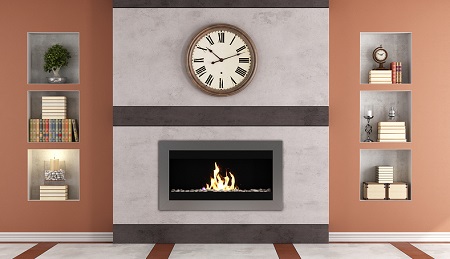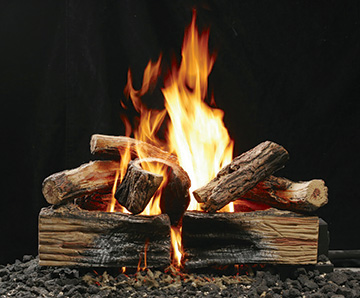Gas Fireplace and Stove Q&A Session
 There’s no doubt about the growing popularity of gas fireplaces and stoves. All across North America, homeowners are choosing gas to run their fireplaces for many reasons. Gas is clean and convenient, controlling the temperature is very simple, and modern gas fireplaces are designed to produce something very close to the look and feel of a traditional wood fireplace.
There’s no doubt about the growing popularity of gas fireplaces and stoves. All across North America, homeowners are choosing gas to run their fireplaces for many reasons. Gas is clean and convenient, controlling the temperature is very simple, and modern gas fireplaces are designed to produce something very close to the look and feel of a traditional wood fireplace.
If you’re new to gas fireplaces or stoves, or if you’re thinking of having one installed in your home, here are a few things you’ll like to know.
Do gas stoves and fireplaces run on “standard” natural gas?
Yes, and they can also be operated with propane. For some homeowners, the best option is to run a gas line to the appliance from a propane tank, while others find it easier to just tap into the natural gas supply already entering their home. Most gas log sets will work with either type of gas. Check with the manufacturer of your log unit to find out if any alterations are needed for a specific type of gas.
Are there differences I need to know about between propane and natural gas?
There are a few. The most significant is the amount of heat each type of gas will produce. Propane burns at approximately 2,500 BTUs per cubic foot, where the methane in natural gas burns at about 1,010 BTUs per cubic foot. In other words, propane will create double or more the temperature. This is the reason a change in the valve system is often necessary when converting from one type of gas to the other.
Gas logs aren’t real logs, are they?
Ceramic log sets used in fireplaces and stoves certainly look real wood, but no, there is no wood contained in them. Today’s selection of ceramic logs include sets with an amazingly similar appearance to traditional wood logs. You can buy logs that have simulated textures to look like pine, birch, oak and many other types of wood. Best of all, ceramic logs don’t have to be replaced after every fire.
Do I need a chimney for a gas fireplace?
The traditional chimney system used for wood fireplaces and stoves isn’t necessary for gas systems. Gas stoves and fireplaces are available in both vented and non-vented models, but neither of them require a chimney. Think of venting as an exhaust channel rather than a path for large amounts of creosote and smoke. Gas burns at a very high efficiency rate, producing no smoke or fumes – as long as these appliances are property vented.
What are my options on where a gas unit can be installed?
 While some locales have ordinances as to where gas stoves and fireplaces may be installed within a home, in general these appliances come in models that can be put in many places such as bedrooms, bathrooms and kitchens. Fireplaces can be ground-level or placed within a wall up off the floor. Some models are built to function as two-sided units, bringing heat to two adjoining rooms. Always check with your municipality when installing any kind of fireplace or stove.
While some locales have ordinances as to where gas stoves and fireplaces may be installed within a home, in general these appliances come in models that can be put in many places such as bedrooms, bathrooms and kitchens. Fireplaces can be ground-level or placed within a wall up off the floor. Some models are built to function as two-sided units, bringing heat to two adjoining rooms. Always check with your municipality when installing any kind of fireplace or stove.
At Burlington Fireplace of Wisconsin, we’re in business to help you have the kind of fireplace you want and operate it safely. Shop us first for the top names in gas and wood fireplaces and stoves, fireplace inserts, outdoor fireplaces and custom hearth work. We’re located at 857 Milwaukee Ave. You can reach a helpful hearth expert at (262) 763-3522.
